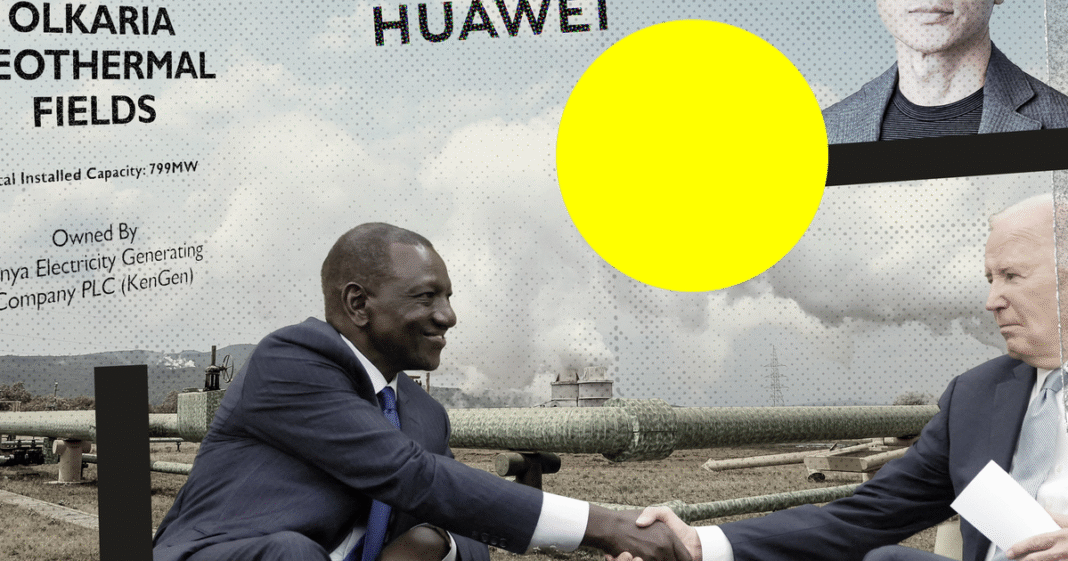Microsoft’s Cloud Expansion in East Africa: The Olkaria Data Center Saga
In May 2024, Microsoft announced an ambitious partnership aimed at rolling out cloud computing services in East Africa through the Olkaria data center. This initiative was touted as a significant enhancement for the company’s Azure products in the region. In collaboration with the Kenyan government, which already facilitates digital access to public services via its eCitizen platform, plans were set in motion to migrate more governmental operations to the cloud. G42, an Emirati tech firm, joined Microsoft as a key partner in this endeavor.
Navigating Uncertainties and Strategic Goals
However, nearly 15 months after the announcement, the partnership has faced challenges. According to insiders with direct knowledge of the project, including a financier involved in discussions, stakeholders have struggled to define the precise applications of Microsoft’s cloud services in Kenya beyond the government’s initial commitment. This uncertainty raises questions about the project’s overall viability and the establishment of a sustainable financial model.
Geopolitical Context
This partnership did not arise in a vacuum; it is set against a backdrop of changing geopolitical dynamics. A tech infrastructure financier noted that the collaboration reflected a geopolitical dance, particularly as the UAE sought to counterbalance its historical ties with Huawei, a Chinese tech giant often viewed with skepticism by U.S. policymakers. Thus, this project is not merely a business transaction but a maneuvering within the broader geopolitical landscape.
The Chinese Tech Dominance in Africa
Over the past decade, China has firmly positioned itself as a key player in Africa’s digital infrastructure. Through major firms like ZTE and China Telecom, the nation has developed extensive telecom hardware and internet access services across the continent. Huawei, in particular, stands out as an entrenched partner, having constructed a substantial portion of Africa’s 4G networks and engaged in widespread partnerships with various African governments.
Huawei’s competitive edge lies in its ability to provide infrastructure at lower costs than Western counterparts while simultaneously fostering training programs aimed at enhancing local digital skills. This strategy has earned Huawei significant goodwill across the continent, allowing it to secure contracts and establish long-term partnerships.
G42 and Shifting Alliances
G42 has established relationships within this landscape, previously sourcing servers and networking equipment from Huawei. However, geopolitical pressures have necessitated a reevaluation of these ties. In 2023, the Biden administration raised concerns regarding G42’s alignment with Huawei, prompting G42 to cut its connections. This separation was strategic; as CEO Peng Xiao articulated, maintaining partnerships with both Chinese and American technology providers was no longer tenable.
Following these corporate adjustments, the U.S. approved advanced chip exports to G42, facilitating further investments and positioning the Emirati firm for deeper engagement in global tech.
Strategic Visits and Investment Movements
The announcement of the Olkaria data center coincided with a historic state visit by Kenyan President William Ruto to the United States, marking the first visit by an African leader in 16 years. This visit, supported by former U.S. Ambassador to Kenya Meg Whitman, reinforced the U.S.’s strategic positioning in Africa, portraying an image of partnership with Kenya as a preferred ally in the region.
During this pivotal time, Microsoft unveiled its partnership with G42. This undertaking represented a significant influx of Emirati investment, marking a shift that positioned the UAE as a leading foreign investor in Africa, surpassing China in terms of total announced investments.
The Bigger Picture of Technology and Investment
Despite its importance, the Olkaria project has not emerged unscathed from external geopolitical currents. As technology emerged as a focal point of political discourse under the Trump administration, Kenya’s project has faced delays due to shifting U.S. priorities. The U.S. has directed its technological investments toward more advanced economies, funneling resources into regions perceived as safer or more strategically valuable.
For instance, announcements of major deals with the UAE and Britain reflect a broader strategy prioritizing partnerships that align with U.S. interests in AI and quantum computing. The Olkaria project, with its potential but comparatively limited scale, has struggled to maintain focus amidst these grander initiatives.
Challenges from a Global Perspective
The broader implications of this focus on technology reveal a significant tension. The urgency surrounding American technological competitiveness, particularly in AI, has overshadowed Africa’s emerging market status. California policy discussions have increasingly centered on bolstering U.S. supremacy in tech, rendering regions like East Africa secondary.
As the Olkaria project lingers amid these developments, it serves as a reminder of the intricacies involved in international collaborations. While political and economic forces shift, the immediate challenges faced by Microsoft, G42, and the Kenyan government speak to the complexities of navigating such partnerships successfully.
The Future of the Olkaria Project
As of now, G42 has not publicly commented on the project’s delays or its adjusted timelines. Microsoft, too, remains tight-lipped regarding the future of its partnership and the development of the Olkaria data center. This uncertainty heightens anticipation and raises the stakes for all parties involved, as the interplay between technology, geopolitics, and local aspirations continues to evolve in this crucial region.



